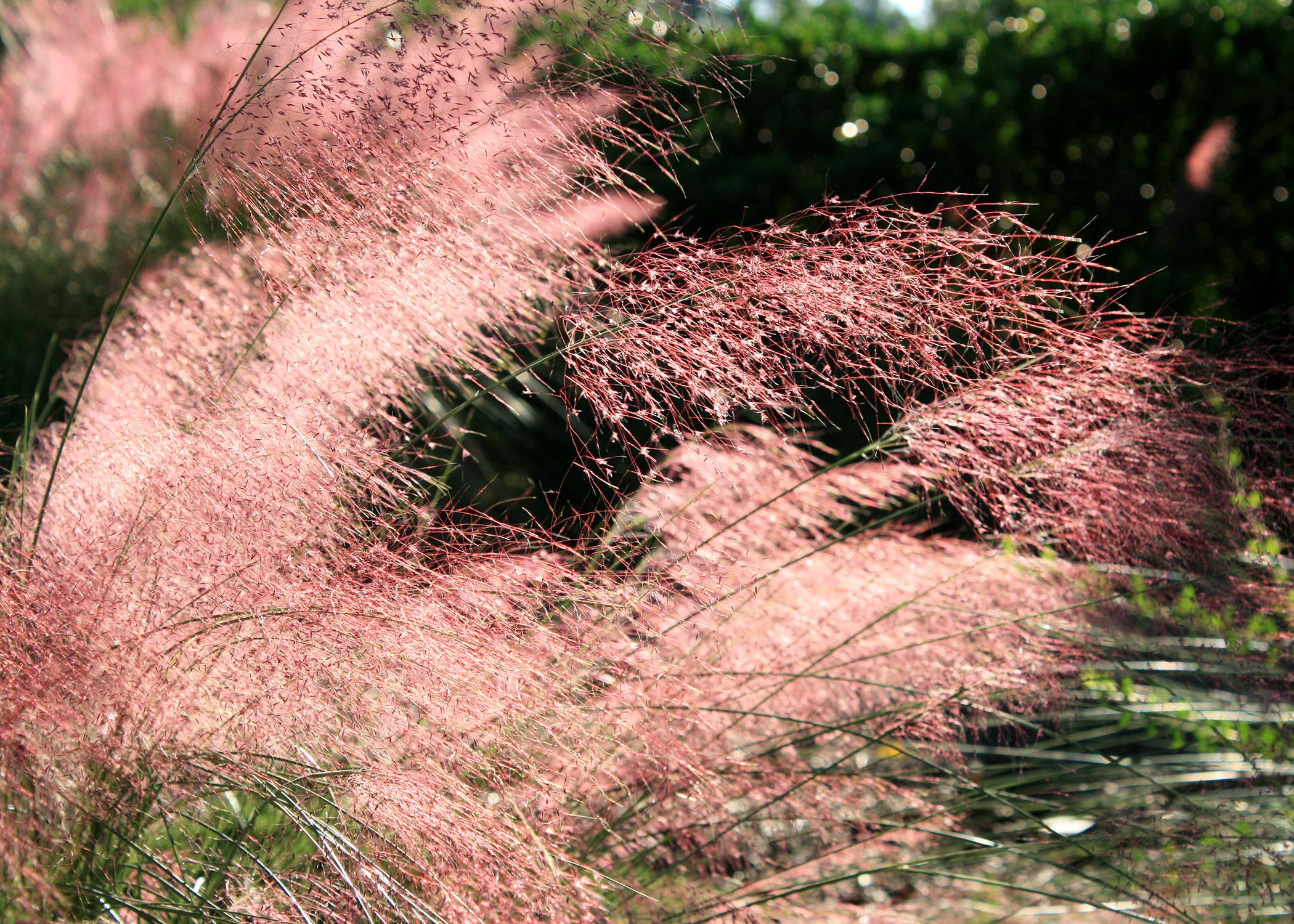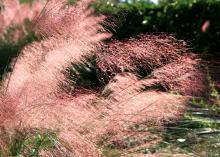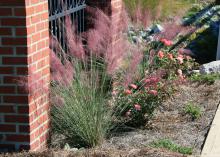Information Possibly Outdated
The information presented on this page was originally released on October 21, 2019. It may not be outdated, but please search our site for more current information. If you plan to quote or reference this information in a publication, please check with the Extension specialist or author before proceeding.
Gulf muhly shows its worth in fall gardens
If there is a showier plant in the fall than our Mississippi native Gulf muhly grass, I don’t know what it is. Since it is a native, it was not bred for any particular characteristic but struts its stuff naturally.
Gulf muhly grass has a unique texture, with spiky, upright leaves that offer summer interest. But it’s the plant’s last grand flourish in the fall that creates landscape excitement. The grass flowers in billowy masses, called inflorescences, which resemble pink clouds floating in the landscape.
The color holds as long as there isn’t a hard freeze. Even after that, the flower heads keep their airy shape and remain a garden asset. This plant is so good that it was selected as a Mississippi Medallion winner in 2010.
If you can place your muhly grass where it will be backlit by the rising sun, it will seem to glow and create a traffic-stopping display in your landscape. Anyone seeing this sight can realize the significant impact ornamental grasses can have in our winter landscapes.
Early fall is a great time to plant this native, so don’t waste any time selecting yours from the local garden center.
Choose a landscape site that receives at least 6 hours of full sun, and set the plant a little bit higher than the landscape level to help with drainage. Turn over the soil, and work in at least 3 to 4 inches of quality compost before planting.
Consider spacing needs. While a mass planting of Gulf muhly grass is a gorgeous sight, these plants need their individual space. Each plant can grow up to 4 feet wide, so plant on 3-foot centers to achieve that filled-in mass look.
Like all ornamental grasses, there is really only one maintenance item that can’t be neglected. In late winter, cut the Gulf muhly grass clumps back to 6 inches tall before the spring growth starts. This trimming clears the way for new foliage and results in a nicely formed clump.
Don’t be tempted to cut back any earlier because you will remove the dry flower stems that create movement with the wind and habitat for wildlife.
Other plants with similar landscape performance are called muhly grass, but most of these have white flower heads. Gulf muhly grass, known scientifically as Muhlenbergia capilaris, has the pink inflorescences that really pop in the fall and winter.
Regardless of what they are called, make sure you have muhly grass in your landscape.




